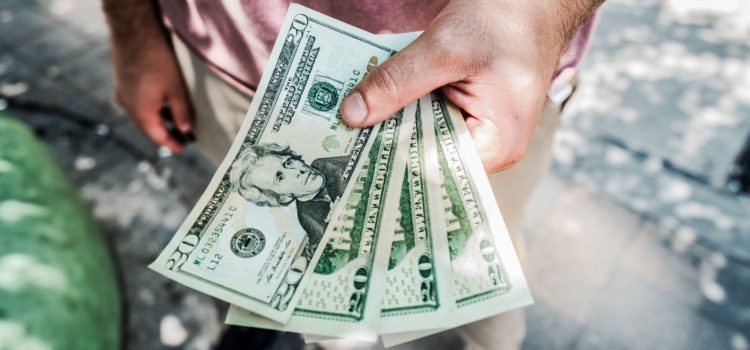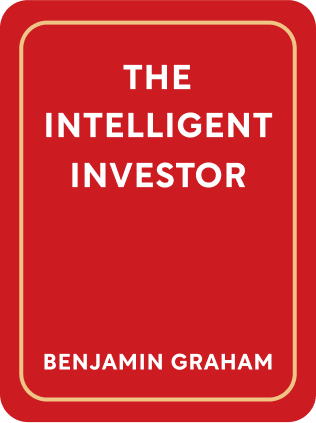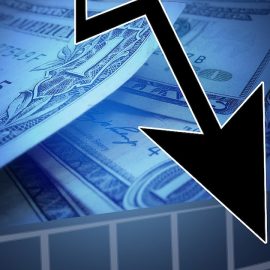

This article is an excerpt from the Shortform book guide to "The Intelligent Investor" by Benjamin Graham. Shortform has the world's best summaries and analyses of books you should be reading.
Like this article? Sign up for a free trial here .
What are aggressive investors? Are aggressive investing strategies successful?
Aggressive investors are people who follow an investment strategy of discipline and research that may go against other common strategies. The aggressive investor is often unpopular because their strategy may seem counterintuitive to other investors.
Read more about aggressive investors and their strategy.
How Should Aggressive Investors Invest, Generally?
To beat the overall market, the aggressive investor needs to practice a disciplined approach that is unpopular in the larger market.
Why unpopular? Investing is so competitive that any straightforward strategy that actually works consistently will quickly be adopted by the rest of the market, and the profits will evaporate. Graham cites an example from 1949, where buying the Dow Jones index below its intrinsic value and selling it above intrinsic value provided consistent returns over much of the past century. After 1949, this no longer worked—either because people adopted the strategy and thus bid up stock prices past the point where the strategy worked; or the strategy was illusory to begin with.
After all these warnings, what strategy can be used, then? In essence, Graham’s strategy is to use a framework to value companies reliably, then identify companies that are priced lower than their fair value. In other words, buy a company when it’s priced more cheaply than it’s worth. That’s what most of the remainder of the book is about.
Why does this strategy not lose its advantage over time, like other strategies? Graham suggests a few reasons:
- Speculators trade so erratically that, at any time, there will always be stocks that are overvalued and undervalued.
- Companies and entire industries may be undervalued simply because they fall out of fashion.
- Despite the claims of the efficient market hypothesis, there will remain pricing inefficiencies in the market, particularly because market movements are made of people following their own flawed psychology and of such people mimicking each other.
(Shortform note: The implication is that the patient, methodical, emotionally composed method suggested by Graham will continue to be unpopular. Most speculators are swayed by popular opinion, have mood swings, look for simple solutions, and are impatient for riches. Few will have calm control over their psychology and take on the burdensome task of thorough research, and so few will enjoy the fruits of the strategy.)
Enthusiasm is great for endeavors outside of investing. In investing, it will ruin you. Here you need self-control. You cannot let other people’s opinions and emotions sway your own.
The Aggressive Investors, Specifically
With the general mindset established, we can now cover the specific choices of the aggressive investor. While the defensive investor can earn market returns simply by investing in general mutual funds, the aggressive investor needs to seek pointed opportunities to be above average.
Asset Classes to Avoid
An aggressive investor willing to do a lot of work will likely be more interested in a broad array of asset classes. If you know what you’re doing and can find good opportunities, you’ll likely enter areas that defensive investors should stay clear of.
However, Graham cautions against a set of instruments that even aggressive investors should be skeptical of. An investor’s success is defined just as much by what he chooses not to do as by what he does.
For the below issues, the aggressive investor should be cautious and scrutinize the security before investing.
- Be careful not to get carried away by the promise of higher returns while ignoring the risk and inadequate margin of safety.
- Avoid buying each of these securities at full prices. Consider buying them only at steep discounts (where prices are below two-thirds of their fundamental value).
In any of these classes, you may find clear bargains, but you need to be more careful than usual.
Defensive investors should avoid these entirely, but aggressive investors may consider them if they’re disciplined.
Second-Grade Bonds (Junk Bonds)
Companies with a sound position offer first-rate corporate bonds. More precarious companies with lower credit ratings issue lower-grade bonds (also known as “junk bonds”) with a higher interest rate.
One heuristic Graham uses to determine the grade of a bond is the ratio of company earnings to interest charges.
- In the railroad industry, for instance, he prefers that a company earn at least 5 times the annual interest charge; less healthy companies might only have enough earnings to cover 1 times the interest charge.
- In modern times, WorldCom sold $11.9 billion of bonds in 2001. However, its pretax income fell short of covering its interest charges by $4 billion. It could only pay off its interest by borrowing even more money. While its bonds did offer 8% yields for a few months, WorldCom went bankrupt in 2002.
It may be tempting to buy these lower-grade bonds purely for the sake of a higher yield. But Graham cautions that it’s unwise to seek attractive yield without adequate safety. The companies issuing lower-grade bonds have a higher chance of default and you may actually lose your entire principal, merely for an extra 1-2% of yield.
Therefore, a second-grade bond selling at par value is usually a bad investment. It’s better to buy lower-grade bonds at steep discounts. Because these bonds tend to rise and fall with markets, a patient investor will be able to find good deals.
In his modern commentary, Zweig mentions there are now junk-bond funds that allow more diversification across dozens of different junk bonds. While they do outperform Treasury bonds on paper, they tend to charge high fees.
Foreign Government Bonds
The trouble with owning foreign government bonds is that the owner of these bonds has no legal way of enforcing them. Unlike domestic companies, foreign governments are outside the domestic legal system.
Historically, foreign bonds have also had a poor history for much of the 20th century until at least when Graham wrote this book. For instance, Cuba issued bonds that reached a high of 117 in 1953, then defaulted on those bonds and brought the price down to 20 in 1963.
In his commentary, Zweig mentions there are now emerging-market mutual funds that, once again, allow diversification across foreign bonds. He notes that these have the useful property of not correlating strongly with the US stock market and may be useful as diversification, but don’t put more than 10% of total bond holdings into them.
New Stock Offerings (IPOs) and New Issues
In an initial public offering (IPO) or a new stock offering, privately owned companies “go public” and sell their stock to the public. This allows the company to sell their stock for cash, raising funds for further investment and allowing stockholders to cash out. Aggressive investors should consider these carefully.
Not all new issues should categorically be dismissed, but they deserve extra scrutiny for two reasons:
- The underwriters of the IPO (commonly investment banks) own a large portion of shares, so they have a passionate interest in painting the best picture of the company to pump up the price.
- New issues are opportunistically sold under good market conditions (typically bullish), which means worse conditions for the buyer.
When considering IPOs, we tend to fixate on the landmark examples of the past—the Microsofts and the Apples—while forgetting that most other IPOs were bad investments. Zweig notes that, between 1980 to 2001, if you had bought each IPO and kept it for 3 years, you would have underperformed the market by 23% annually.
The IPO Cycle
IPO hype occurs in a cycle. History has shown a regular cycle of 1) a bullish period, during which private companies go public with soaring stock prices, followed by 2) steep declines in a market contraction. This occurred in 1945, then in 1960, then in 1967, the dotcom boom in the late 1990s, and so on.
In more detail, the bullish period has a repeatable sequence that brings stocks to unfathomable heights:
- In the middle of the bull market, the first IPOs are priced reasonably, and its early buyers make large profits.
- As the market continues to rise, more companies seek to cash out through IPOs, and the pace of new issues increases. At the same time, the quality of the companies going public deteriorates, and the prices soar to unreasonable heights.
- During the bullish period, the fast rise of the new stock prices causes a greedy complacency that dulls the public’s critical skepticism.
- A sign of the coming end of the bull market appears when the new IPO stocks are priced comparably to mid-sized companies with a much longer track record.
- As the bull market turns downward, the new public stocks may lose 75% or more of their initial price.
For a notable example, AAA Enterprises IPO’d at $14 a share in 1968, reached a peak of $28, then dropped to $0.25 in 1971 (a 98% drop). (We’ll cover this company more in Chapter 17.)
An intelligent investor needs to maintain his critical faculties during bull markets and avoid buying overpriced shares that are far outside the underlying value of the business. If you’re patient, you can pick up steeply discounted shares just years later when the hot stocks fall out of fashion.

———End of Preview———
Like what you just read? Read the rest of the world's best book summary and analysis of Benjamin Graham's "The Intelligent Investor" at Shortform .
Here's what you'll find in our full The Intelligent Investor summary :
- Key advice from what Warren Buffett considers the "best book about investing"
- The 2 major indicators you should use for evaluating stocks
- How you can use aggressive or defensive investing strategies






